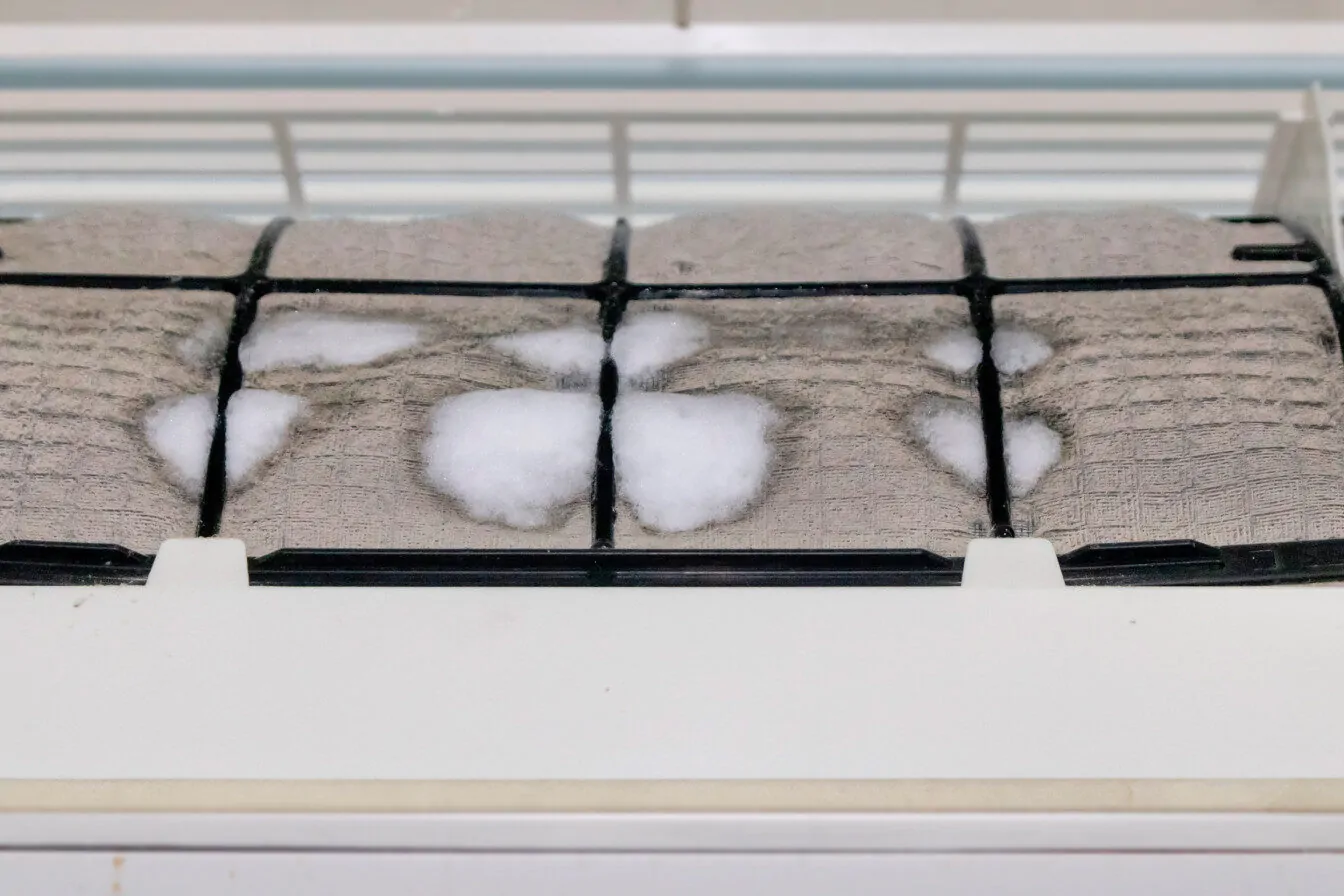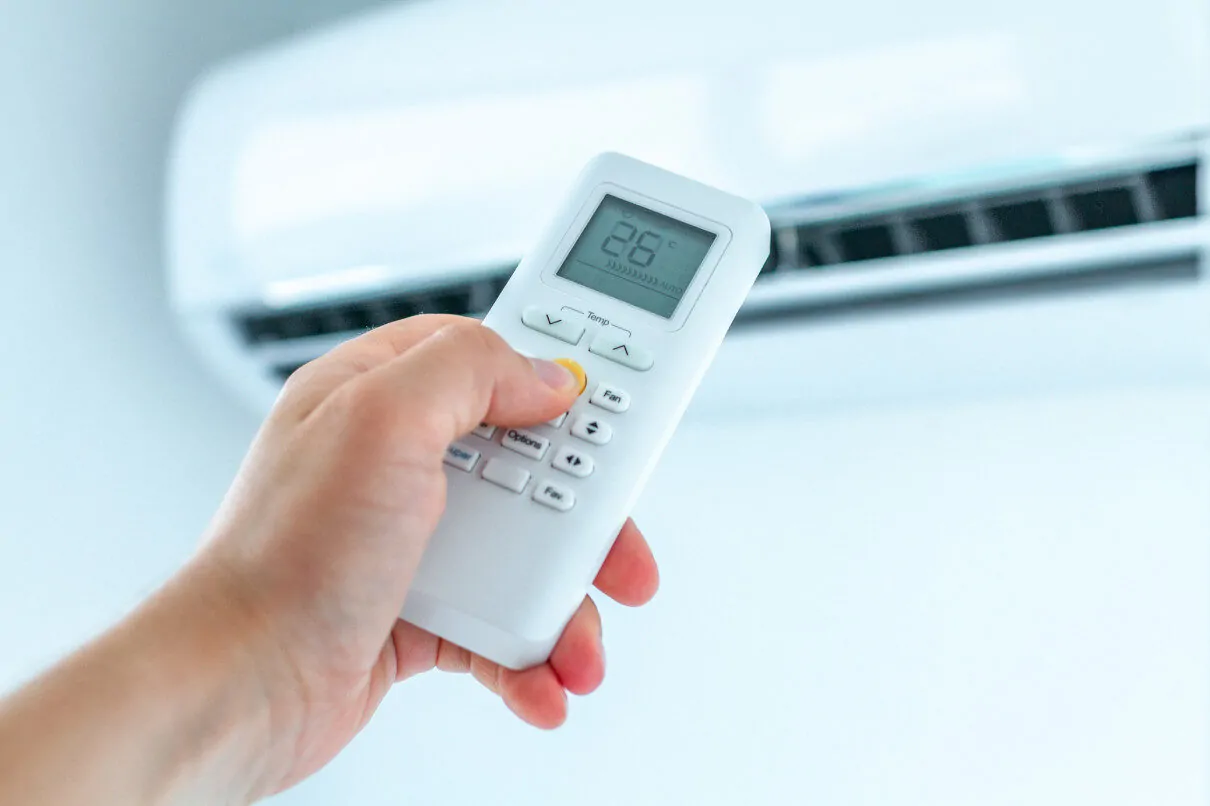Table of Contents
Why Your AC Blows Warm Air — Causes & Fixes
There’s nothing worse than expecting a blast of refreshing cool air on a hot day — only to feel warm air coming out of your air conditioner. You check the thermostat, listen for the hum of the compressor, and even wave your hand in front of the vent, hoping it’s just a fluke. But no luck — your AC is blowing warm air, and your comfort is slipping away.
If this sounds familiar, don’t panic. The problem is common and, in most cases, fixable. In this guide, we’ll explain why your AC is blowing warm air, what you can do to troubleshoot it, and when to call a professional before small issues turn into expensive repairs.
How Your AC Is Supposed to Work
Before we dive into what went wrong, let’s cover how your air conditioning system should work.
Your AC doesn’t create cold air — it removes heat from inside your home and releases it outside. This process relies on a few key components:
Refrigerant
Refrigerant is the chemical compound that makes cooling possible in your air conditioner. It absorbs heat from your indoor air and carries it outside to be released. Without the right refrigerant levels, your AC can’t remove heat effectively, causing warm air to blow through your vents.
Evaporator Coil
Your home contains the evaporator coil, typically near the air handler or furnace. As warm indoor air passes over the coil, the refrigerant inside absorbs the heat, cooling the air before it’s circulated back into your rooms. Keeping this coil clean ensures efficient cooling and prevents ice buildup or restricted airflow.
Condenser Coil
The condenser coil sits in your outdoor unit and is responsible for releasing the heat that the refrigerant collects indoors. As the refrigerant passes through, the condenser coil expels heat into the outside air with the help of the fan. Dirt or debris buildup on the coil can block this process, forcing your system to work harder and reducing efficiency.
Compressor
The AC system often calls the compressor the “heart” because it pumps refrigerant between the indoor and outdoor coils. It compresses the refrigerant gas, increasing its temperature and pressure before sending it to the condenser coil. If the compressor fails, your entire cooling cycle stops, leading to warm air and potential system damage.
Air Handler and Ducts
The air handler and ducts work together to distribute cooled air throughout your home. The air handler pushes air across the evaporator coil, then through the ductwork to each room. Clean, well-sealed ducts are essential for consistent cooling, energy efficiency, and good indoor air quality.
When any part of this cycle breaks down, your AC can’t cool effectively — and that’s when warm air starts blowing through your vents.
Common Reasons Your AC Blows Warm Air
1. The Thermostat Is Set Incorrectly
Thermostat issues are one of the most overlooked causes of warm air.
Double-check that your thermostat:
- Set to “Cool” (not “Heat” or “Fan”).
- Has a temperature setting lower than the room temperature.
- Not exposed to direct sunlight or heat sources that can trick it into thinking the house is warmer than it is.
Also, if your thermostat runs on batteries, weak power can cause it to misread settings. Try replacing them before assuming it’s a bigger issue.
2. Dirty Air Filters Are Restricting Airflow
Your AC relies on steady airflow to work properly. A clogged air filter can block that flow, causing your system to overheat and blow warm air.
Signs your air filter is the problem:
- The air feels weak or warm from the vents.
- Your energy bills have spiked recently.
- You notice dust building up around vents or on furniture faster than usual.
Fix:
Replace your air filter every 1–3 months, especially during high-use seasons. It’s one of the cheapest, easiest ways to keep your AC healthy.
3. The Outdoor Unit (Condenser) Is Dirty or Blocked
Your outdoor condenser unit releases the heat your AC removes from your home. If it’s clogged with dirt, leaves, or debris, it can’t do its job, which means that trapped heat gets circulated back indoors.
Fix:
- Turn off the power to your AC.
- Clear away grass, leaves, or debris from around the unit.
- Use a garden hose to gently rinse the coils (never use high pressure).
If the fins look bent or damaged, you can straighten them carefully with a fin comb — or better yet, let a technician handle it during your next maintenance visit.
4. Low Refrigerant Levels
Refrigerant is the lifeblood of your AC system. If your system is low on refrigerant (often due to a leak), it can’t absorb enough heat, leaving you with warm or barely cool air.
Warning signs:
- There are hissing or bubbling noises near the outdoor unit.
- Ice forming on refrigerant lines or the evaporator coil.
- Longer cooling cycles or warm air despite the system running.
Fix:
Only a licensed HVAC professional can locate and repair refrigerant leaks and then recharge the system safely. Don’t try to top it off yourself — refrigerant handling is regulated and requires EPA certification.
5. Electrical Problems or a Tripped Breaker
If your outdoor condenser loses power, your indoor fan might keep running — circulating air, but not cooling it. It often happens after a power surge or if a breaker trips.
Fix:
- Check your breaker panel and reset any tripped breakers.
- Inspect fuses and wiring (but only if you’re comfortable doing so safely).
- If the breaker trips repeatedly, call a technician — you may have an electrical short or a faulty capacitor.
6. Frozen Evaporator Coil
When your AC coil freezes, it stops cooling properly. It usually happens when there’s restricted airflow or low refrigerant, which causes condensation to freeze over the coil.
Signs include:
- Reduced airflow.
- Ice on refrigerant lines.
- Dripping water when the ice melts.
Fix:
Turn off your AC and let the ice thaw completely. Replace the air filter and run only the fan for an hour or so to dry the system. If the freezing happens again, you may have a deeper issue that needs professional inspection.
7. Duct Leaks or Poor Insulation
Even if your AC is producing cold air, leaky or poorly insulated ducts can cause warm air to mix in before it reaches your rooms. It is especially common in attics, crawlspaces, or older homes.
Fix:
Inspect visible ducts for gaps or loose connections. Use foil tape (not duct tape) for minor leaks. For major duct damage or insulation issues, have an HVAC technician perform a pressure test and sealing service.
8. Compressor Problems
Your AC’s compressor pumps refrigerant between coils — if it fails, your system can’t remove heat. A bad compressor may cause:
- Warm air from vents.
- Clicking or humming sounds from the outdoor unit.
- The outdoor fan is running but not cooling.
Fix:
Unfortunately, compressor repair or replacement is not a DIY job. Because this component is so critical (and costly), a professional diagnosis is essential.
9. Aged or Poorly Maintained System
Like any appliance, your AC loses efficiency with age. Dirt buildup, worn parts, and outdated technology can all cause poor cooling performance.
If your system is 10–15 years old, and repairs are becoming frequent, it may be more cost-effective to replace it with a newer, energy-efficient model.
When to Call an HVAC Professional
While some AC issues are minor, others require specialized tools and expertise. Contact a professional if:
Your refrigerant is leaking or levels are low.
Low refrigerant means your system can’t absorb enough heat, leading to warm air and longer cooling cycles. A certified technician should locate and repair the leak before recharging the system safely.
You hear unusual noises from your unit.
Strange sounds like banging, hissing, or clicking often signal loose parts, electrical issues, or compressor problems. Ignoring them can lead to costly damage or complete system failure.
The problem recurs after basic troubleshooting.
If your AC keeps blowing warm air even after you’ve cleaned filters and checked settings, there’s likely a deeper issue. Persistent problems usually point to electrical faults or failing components.
The air from vents feels warm even after maintenance steps.
When airflow remains warm despite replacing filters or cleaning coils, internal parts may not be working properly. A professional inspection can identify failing sensors, motors, or refrigerant issues.
Your AC frequently turns on and off without cooling properly.
Short cycling can indicate an electrical malfunction, refrigerant imbalance, or an oversized system. It not only prevents proper cooling but also increases wear and energy costs.
An HVAC technician can perform diagnostic tests, measure refrigerant pressure, inspect electrical components, and pinpoint the exact cause — saving you time and future repair costs.
Preventing Warm Air Problems in the Future
The best way to keep your AC running efficiently is regular preventive maintenance. Just like your car needs oil changes, your AC benefits from tune-ups at least once or twice a year.
Here’s what professional maintenance typically includes:
- Checking refrigerant levels and pressure
- Cleaning coils and condensate lines
- Inspecting electrical components
- Testing thermostat accuracy
- Tightening connections and lubricating parts
- Verifying airflow and temperature output
Preventive care not only keeps your AC blowing cool but also helps you avoid costly breakdowns during peak summer months.
Bonus Tips to Keep Your Home Cooler Naturally
While your AC handles the heavy lifting, you can help it out with a few smart cooling habits:
- Close blinds and curtains during the hottest parts of the day.
- Use ceiling fans to circulate cool air efficiently.
- Seal air leaks around doors and windows.
- Insulate your attic to prevent heat transfer.
- Install a smart thermostat to optimize cooling schedules.
Small steps can make a big difference in comfort — and in keeping your energy bills under control.
Why You Shouldn’t Ignore Warm Air Issues
Running your AC while it’s blowing warm air doesn’t just waste electricity — it can cause further damage. Low refrigerant, dirty coils, or electrical malfunctions strain your system, leading to higher repair bills and even premature failure.
What starts as a minor issue can quickly escalate into:
- Burned-out compressors
- Frozen coils
- Motor failures
- Higher humidity and indoor discomfort
Addressing warm-air problems early keeps your AC efficient, reliable, and ready to tackle the heat whenever you need it most.
Conclusion
Don’t Sweat It — Get Your Cool Air Back
If your air conditioner is blowing warm air, don’t let frustration (or heat!) get the best of you. With a few checks — and help from an experienced HVAC professional — you can restore cool comfort quickly and prevent the problem from returning.
At Canilu Air, we specialize in diagnosing and fixing AC issues fast. From simple tune-ups to complete system replacements, our certified technicians ensure your home stays cool, efficient, and comfortable all year long.
📞 Call us: (602) 609-3480
📧 Email: [email protected]
🌐 Visit: Canilu Air


